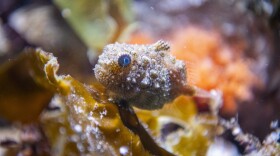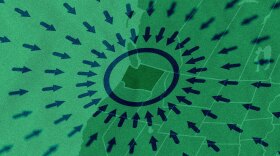New research suggests the nation’s first reported coronavirus case — a Snohomish County resident — was not the source of the outbreak in Washington, as previously thought.
That person, referred to as WA-1, returned to Seattle-Tacoma International Airport from China in mid-January. When a second case emerged a month later, scientists in the Trevor Bedford lab at the Fred Hutchinson Cancer Research Center compared the genetics of the two virus samples. They found the viruses were so similar they were likely related, meaning WA-1 appeared to have started the chain of infection here.
Now new, preliminary research out of the University of Arizona has called that into question. They modeled the virus’ gradual genetic changes, and found the Washington outbreak more likely came from a second, undetected case. The new research has not yet been peer reviewed.
Louise Moncla, a virologist in the Bedford Lab, says she and her colleagues now agree a second introduction seems more likely. And she says that is actually heartening, because it would mean spread from that first case was effectively squashed.
“I think there’s a real note of hope in this analysis, which is that intensive contact tracing, and self-isolation might actually really work. And that, personally, gives me quite a bit of hope,” she said.
The new analysis also might change the timeline of how the virus started spreading in the community — from late January to early or mid-February.
One important early insight from the Bedford Lab has held up: that the virus was spreading widely in the community in February. That likely helped jumpstart an aggressive public health response.
“I think the thought that there had been ongoing transmission that was undetected and potentially missed due to narrow testing criteria was really disturbing to people,” Moncla said. “My impression was that it did successfully mobilize people into really taking this seriously.”







